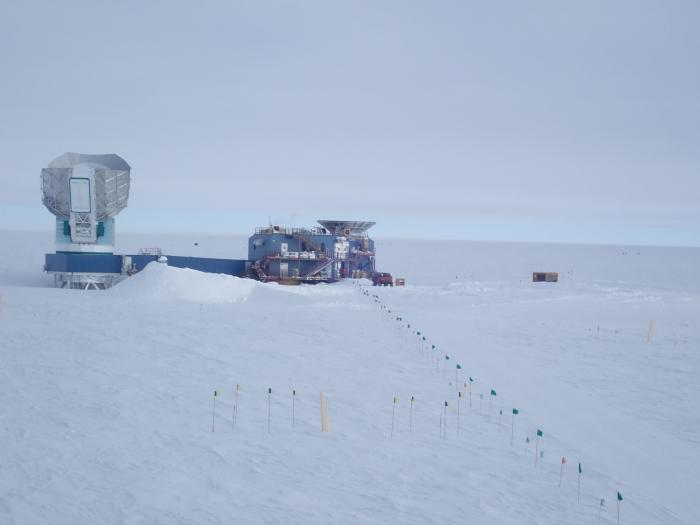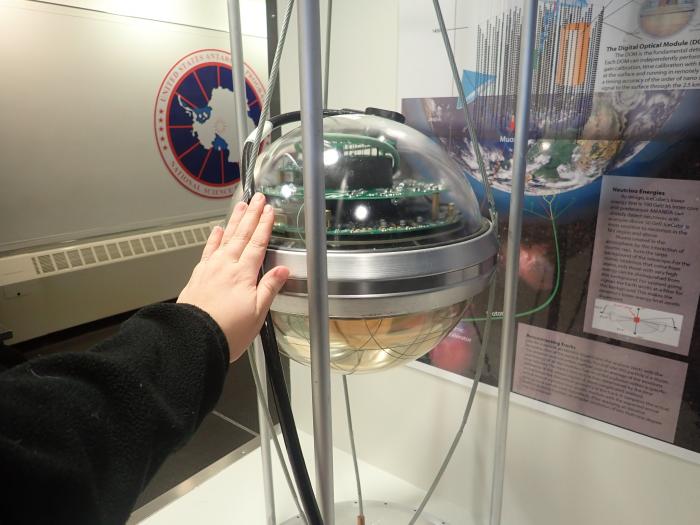Why do science HERE?
Antarctica- “It’s a harsh continent.” – Robert F. Scott
The South Pole- “It’s a harsh-er…place.” – Jocelyn (not good at creating iconic quotes)
All that to say, that living and working at the South Pole is no easy feat. For starters, the journey to the South Pole is long and can be made even longer if the weather is not right for flight. The general route is Home --> Christchurch, NZ --> McMurdo Station, Antarctica --> The South Pole. Delays and flight cancellations can happen at any point in the route. Luckily, I was only delayed in McMurdo for three days, but I’ve heard stories of delays at every point, up to a couple weeks!
Then, there is the elevation. We are located at an elevation of 9,301 feet. The first 24-72 hours after arrival are reserved for acclimation as the body works through fatigue, nausea, headaches, due to low levels of oxygen in the air. Even after acclimating, activities like shoveling snow or moving equipment can leave you more winded than usual.
Then, there is the humidity. Less than 1% humidity! For comparison, my hometown in California has a humidity of 70% today. This one has been tricky to adjust to as it feels worse at night, when I’m trying to sleep.
Then, there is the temperature. Currently, the average temperature with the wind chill is about -30 degrees F. Of course, our extreme cold weather gear does a wonderful job at keeping us protected (sometimes I even start to think I could live in cold weather…sometimes), but it is still challenging for those that have to be outdoors for a majority of the day.
Then, there is the availability of resources. Goods have to take the same route as us people do, and often it takes much longer. So even if you are here ready to work, sometimes there is a waiting game you have to play until the cargo arrives.
Then, then, then, then…. There are countless challenges to working at the South Pole, so why work here?!
The South Pole is a unique location that offers advantages to researchers that can’t be found anywhere else on Earth. For example, the South Pole telescope depends on the high altitude, low humidity, and space to image the sky by detecting microwaves dating back to the Big Bang. The low humidity, in particular, is crucial to acquiring clear pictures since microwaves are normally absorbed by water.
 The South Pole Telescope on the left
The South Pole Telescope on the left
The South Pole is also a perfect match for The IceCube Neutrino Observatory. The observatory takes up a 1km squared area…plenty of space for that here. But the key for the observatory is the 2.8 kilometers-deep ice. IceCube has over 5,000 neutrino detectors buried up to 2.45 kilometers into the ice. At these depths the ice is transparent and allows for detection and quantification of light as neutrinos interact with the detectors.
 IceCube diagram of the detectors, courtesy of University of Wisconsin-Madison
IceCube diagram of the detectors, courtesy of University of Wisconsin-Madison
 IceCube detector
IceCube detector
A neutrino is a near mass-less subatomic particle that is born from high energy events—think supernovas, black holes, gamma rays—and travels in one direction, undisturbed, for most of their existence. In rare instances, these neutrinos are interacting with our under-ice detectors, generating light, and giving scientists directional clues that can lead us to the neutrino origin. By knowing where these neutrinos come from, we can begin to map high-energy events in the universe—a kind of powerful, reverse, astronomy experiment. Since these neutrino-detector interactions are rare, detecting one becomes a numbers game. Hence, the over 5,000 detectors in the ice. In fact, IceCube is currently in an upgrade phase with the goal of increasing the number of detectors and characterizing properties of the ice to better understand how light moves through it.
The South Pole is harsh, yes, but it provides an incredible environment for incredible science.
Talk soon, friends.
Jocelyn


Add new comment